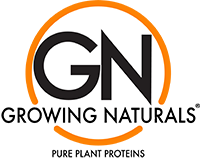We understand that levels of inorganic arsenic in rice is of concern in some parts of the world. That is why Growing Naturals is committed to using brown rice ingredients that provide health benefits while being manufactured in a way that ensures there is no notable inorganic arsenic level.
What is Dartmouth's study on arsenic in brown rice syrup, published in the journal Environmental Health Perspectives?
This study published February 2012 can be found here. It is one in a series of studies looking at arsenic levels in food. The stated goal of the study is to encourage the FDA to set regulations for arsenic levels in food, which we agree with. Unfortunately, the study has resulted in misunderstandings and unnecessary fear among consumers because:
- It compares the levels of arsenic in food to the levels of arsenic in water, which is not comparing "apples to apples". When issuing new food guidelines, the FDA often applies a multiplication factor of 100 to 1,000 times that of water. This is because the recommended intake of water is "8 glasses of water every day" but when was the last time you ate "8 glasses of brown rice every day"? In reality, your daily intake of any one food ingredient will be significantly smaller than that of water thus the chances of arsenic building up in your system is significantly less.
- It doesn't fully address the difference between inorganic arsenic (which poses a health risk) vs. organic arsenic (which is not known to pose a health risk and is actually needed in low levels by the human body as noted here)
How much arsenic is in our brown rice ingredients?
We want to assure you that our brown rice ingredients do not pose an inorganic arsenic risk. Our brown rice ingredients undergo 3rd party and FDA testing, as we already self-regulate our arsenic levels. The reports find that our levels are either "not detectable" or less than 1ppm (part per million), and only for organic arsenic which is not deemed a risk.
What are acceptable levels of inorganic and organic arsenic levels?
According to California's regulations under the Safe Drinking Water and Toxic Enforcement Act of 1986 (commonly referred to as "Prop 65", which is significantly stricter than the FDA on many levels), there is a "Safe Harbor" list of two classes of chemicals: those that cause reproductive toxicity and those that are considered carcinogens. - The table of chemicals that cause reproductive toxicity does not list arsenic. - The table of "no significant risk levels" for carcinogens lists only inorganic arsenic and does not recognize organic arsenic as a potential for risk. In addition, Prop 65's requirements are based on exposure, not concentration. The regulations state that human consumption of food does not constitute "exposure" for purposes of warning notification under the Act to the extent that chemicals are naturally-occurring in agricultural products, were not added by any known human activity, and were not avoidable by good agricultural or good manufacturing practices.
Why did the tested products have a higher arsenic level than our products?
Our ingredients are not grown in Pakistan, where the majority of brown rice syrup is imported from and where there are higher levels of naturally occurring arsenic in the water and soil. In addition, any naturally occurring arsenic is soluble and easily diminished in our chemical free process that extracts key portions of the whole rice grain. We follow Good Manufacturing Practices, utilize testing at multiple points of production from seed to shelf including 3rd parties and the FDA, and we take all appropriate precautions to ensure the safety of our products with regard to heavy metals as well as other potential contaminants.
Why is INORGANIC arsenic the one considered a risk?
This research on inorganic arsenic is the basis for California adding inorganic arsenic to their list of known risks. Note that chicken and fish are sited as having more arsenic risk than rice and that the average diet includes as much as 1,000 micrograms of ORGANIC arsenic per day. The study sites that the EPA set an acceptable level of 10ppb (parts per billion) of arsenic in water, assuming that the majority of arsenic in water is inorganic, thus a higher risk than the organic arsenic found in rice.
What are heavy metals vs trace minerals and when are they beneficial vs toxic?
Though its definition varies, “heavy metals” is the general term given to a group of elements with metallic properties. Some of these metals are nutritionally essential to support life though they are needed in very small quantities. These are referred to as trace minerals and they include: Iron, copper, chromium, cobalt, manganese, molybdenum and zinc. Ample evidence has established the physiological importance of trace minerals in the human body. For example, Iron is required for the transport of oxygen needed for cellular respiration. Copper is used to create red blood cells and to scavenge free radicals, substances linked to increased risk of cancer or heart disease. Zinc is needed to heal wounds and to ensure that proteins are formed properly to carry out their vital roles. Other metals like vanadium, strontium, arsenic, nickel, tin, aluminum, boron, arsenic and cadmium have unknown or inconclusive roles in human processes. READ FULL ARTICLE
What about reducing arsenic levels in cooked whole grain brown rice?
It is recommended that consumers wash their brown rice well in a colander before boiling, plus add extra water to the pot to help wash away the soluble arsenic.
What are the experts saying about Growing Naturals rice products?
A former FDA Supervisor and consultant to the California State Attorney General's Office and Prop 65 has tested our product to show it is below the food arsenic levels regulated by the UK, Australia and World health Organization (WHO). Here is his professional opinion on why the Dartmouth study is flawed.
